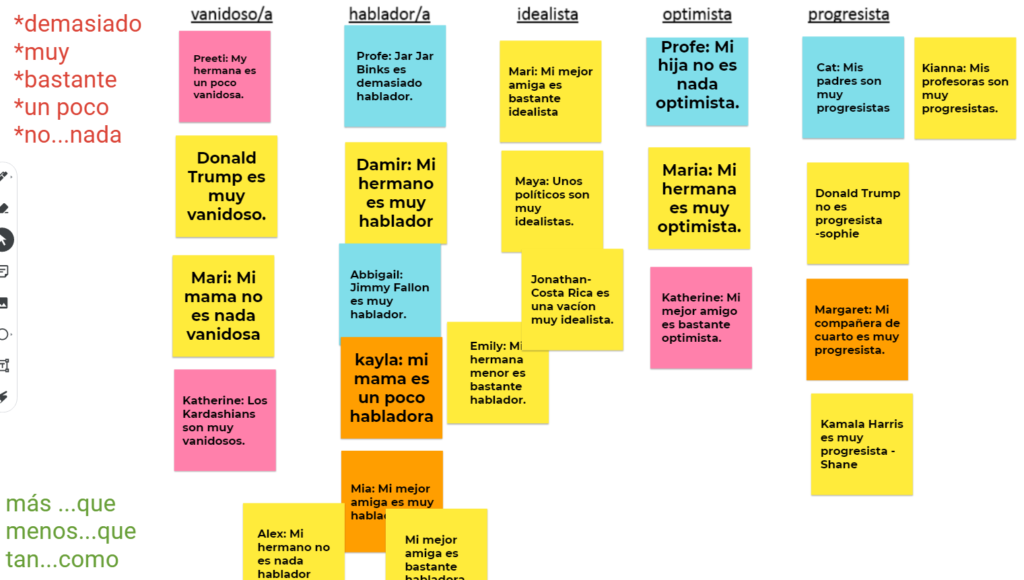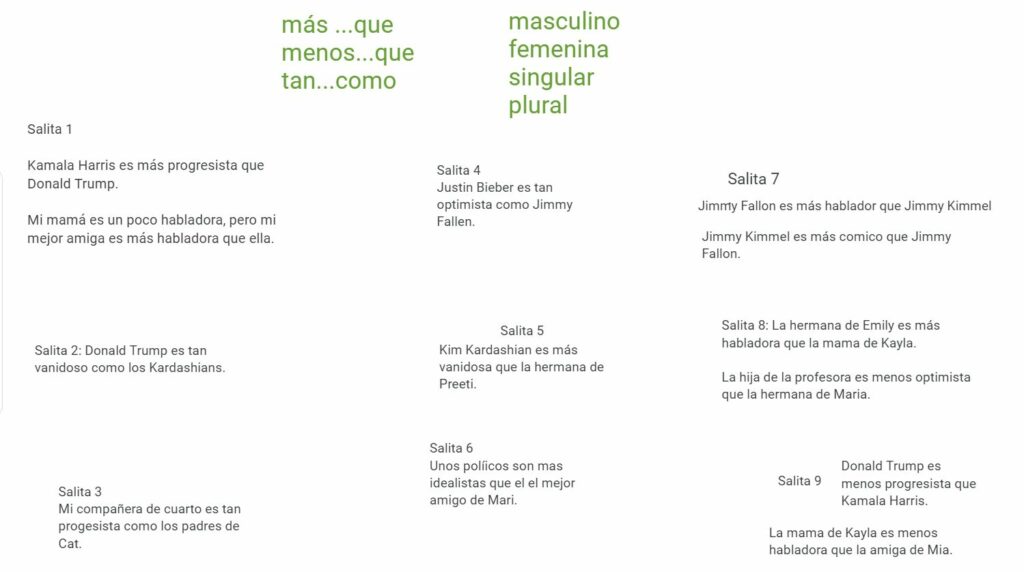I am now two weeks into teaching my first online Spanish class at Fordham University. I took the spring semester off in 2020 to finish my second book, and then fall semester off because of COVID-19 caution: I didn’t want to commute by train, nor teach in a classroom. So my return to teaching after a year’s absence has coincided with having to learn a new way of doing my job.
My tech background has given me a big head start in this process. Before a dandy mid-life career crisis inspired me to return to my original love of Spanish, I worked for fifteen years as a computational linguistics researcher at Los Alamos National Laboratory, Soliloquy (a start-up that stopped), and IBM’s TJ Watson Research Center. I wrote software for a variety of applications including speech recognition, language identification from document images, dialog analysis, and identification of classified documents. Because of this background, technology doesn’t intimidate me: I enjoy it and retain some decent skills. My heart goes out to instructors who are making the same transition with a more conventional, purely liberal arts background.
Two resources have been particularly helpful in this process: a video by SheriAnn Simpson, the founder of EduNovela.com, and a tool, Google Jamboards.
Dr. Simpson makes a wonderful analogy in her video: teaching in a classroom versus online is like cooking in a kitchen versus a campground. In a kitchen you have all the ingredients and tools that you could possibly need, and can whip up complicated dishes. At a campground you have a smaller set of ingredients and tools, and so are bound for trouble if you try to duplicate in this new venue the same dishes you would attempt at home. Instead, you have to ask yourself, “What kind of dishes can I cook at a campground?” Ideally, you will identify some dishes, such as s’mores, that you could never cook as well at home.
Likewise, you shouldn’t try to duplicate online the same things you do in a classroom. Instead you need to find out what will work online — including techniques that don’t work in the live classroom.
I nodded along with Dr. Simpson when she made this analogy, and shared it with friends, family, and colleagues as I was getting ready to start teaching. But didn’t really sink in until my second online lesson, in which — wouldn’t you know? — I used too many kinds of materials and struck too fast a pace because I was trying to imitate my classroom methodology. Boy, Dr. Simpson sure was right.
In my more recent classes, which have gone better, to avoid overcrowding my lessons I have attempted to apply a second nugget of wisdom from Dr. Simpson’s video. She describes a process of “deconstructing” a syllabus, whereby you identify the main types of activities and assessments that take place during the semester, then choose a limited palette of tools and tasks to accomplish them online. I have been doing this at the level of the individual class, thinking about what I want the class to accomplish and identifying the simplest set of activities and tools that will get us there online.
Specifically (if memory serves), Dr. Simpson recommends not having students use more than two or three different types of software during the semester. Since our students are already using Blackboard (for course communication and some assignments), MyLab (the online component of our textbook), and Zoom, I have decided to keep things simple and only use one software tool during my classes. In January, as I ramped up to teach, I learned about a wide range of tools including Panopto, Screencastify, Peardeck, Edpuzzle, Charlala, Flipgrid, Goformative, Gimkit, Blooket, Nearpod, and Genius Scan. In the end I settled on Google’s Jamboard program because it is so versatile.
In my online classroom, Jamboard takes the place of three tools I use every day in my live classroom: PowerPoint, a whiteboard, and handouts.
- Like a PowerPoint, a Jamboard can have multiple slides (called “frames”), and can combine text and images. It is less powerful than PowerPoint — for example, you can’t select and arrange multiple objects — but if I have trouble creating something in Jamboard I just make it in PowerPoint and then cut-and-paste it into the day’s Jamboard.
During the teacher-led portions of my online Zoom classes I screenshare the day’s Jamboard with my students, and use the laser tool to point to different parts of the display. Since Zoom doesn’t let you do a screenshare during a breakout session, I also give my students access to the Jamboard via Google Drive’s sharing settings, so that they can each see the Jamboard on their own devices while in breakout rooms. This is a HUGE advantage. - During a live class I write on the whiteboard and often have my students write on it as well. I can do both in Jamboard, the latter by giving students edit access to the Jamboard through Google Drive’s sharing settings. Here is an example, from my most recent class, in which students came up with examples of adjectives with quantifiers. I set up this frame (aka slide) with adjectives as column headings, the vocabulary list on the left, and some examples (the ones labeled “Profe”). The students did the rest, using Jamboard’s sticky notes.

We then went into breakout rooms, during which pairs of students used mas.que, menos…que, and tan…como to compare the people described on this frame. They wrote their comparisons on the next frame (using Jamboard text boxes, not stickies) while I played omniscient teacher and pointed out problems. We then came back as a class and went over their examples.

- Jamboard also takes the place of handouts. Any informational handout that I would normally distribute in class can be cut-and-pasted into the day’s Jamboard instead. Any handout that I would normally use as the basis for an activity has to be examined and possibly “deconstructed.” In particular, Jamboard doesn’t have tables, so I have to transform any “fill in a table” activity into an alternative format based on stickies or simple text boxes. This is a major nuisance, but Jamboard’s advantages still outweigh this disadvantage (and others).
With only four classes under my belt I still have a lot to learn!!! But I thought it might be helpful to share these first impressions.